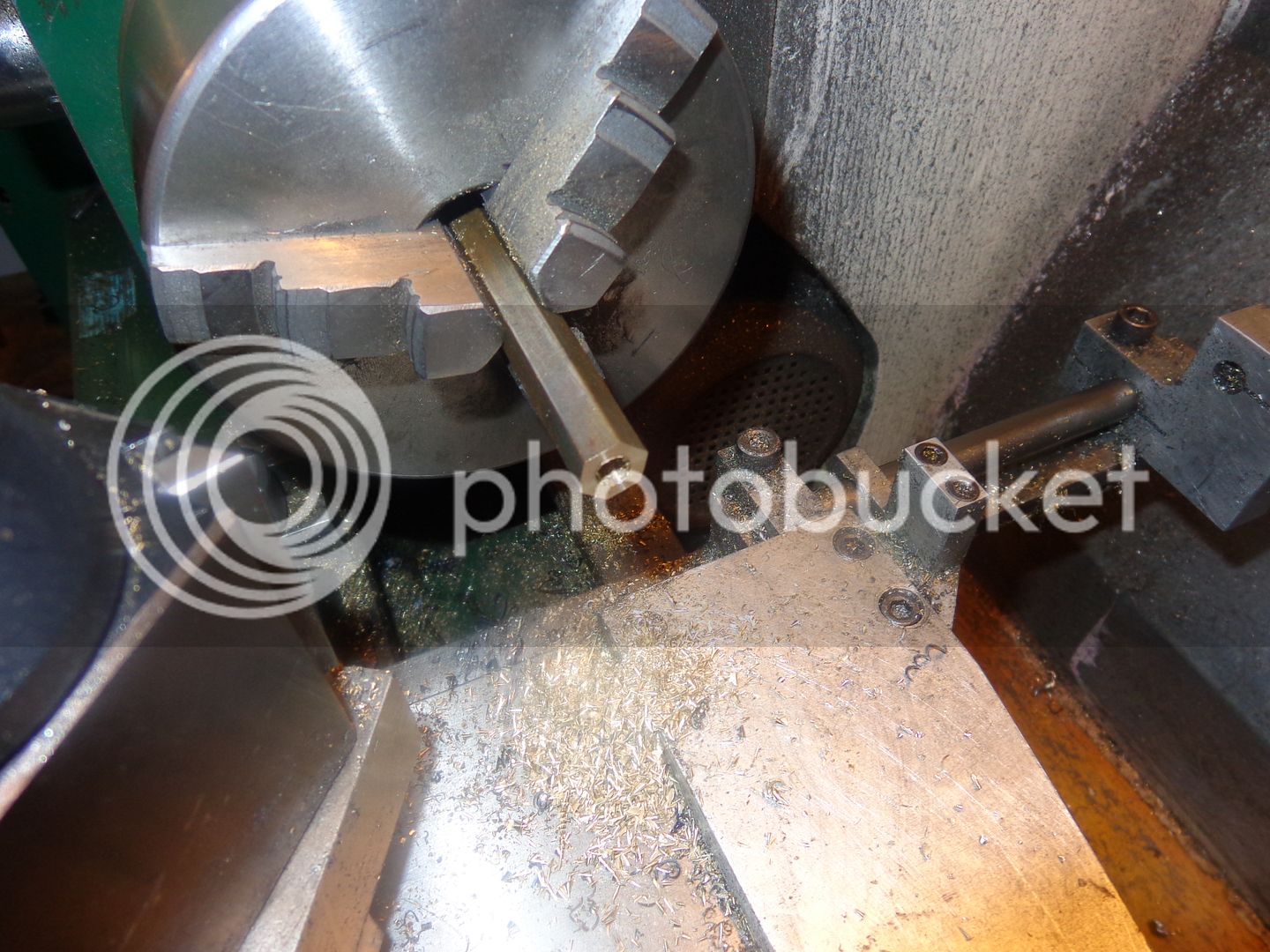While making the stand-off for the pivot arms for my opposed piston engine, the fickle finger of fate dove down and goosed me while I was building the second stand off. The 1/2" shaft was supposed to be turned to an exact 0.312" diameter. I calculated very carefully, and then turned the damned thing down to 0.305" diameter. I'm never quite sure how I do that, but I do. I do not want to build it over again. There is a fabricated brass bushing which is supposed to have a 0.375" o.d to fit in the pivot arm i.d and a .312 bore to fit the turned down end of the stand off. I have read numerous reports of people building D-bits, which seem like a perfect solution to make any size hole, dead nuts on spec. It seems that today would be a good day to learn something, and I do a short piece of drill rod (01) which I will attempt to make into a D-bit to drill a perfect 0.304" hole into the bushing. Follow along, and watch me either create another amazing shop tool "first" or else make a complete fool of myself!!!
Last edited:












![MeshMagic 3D Free 3D Modeling Software [Download]](https://m.media-amazon.com/images/I/B1U+p8ewjGS._SL500_.png)





























































